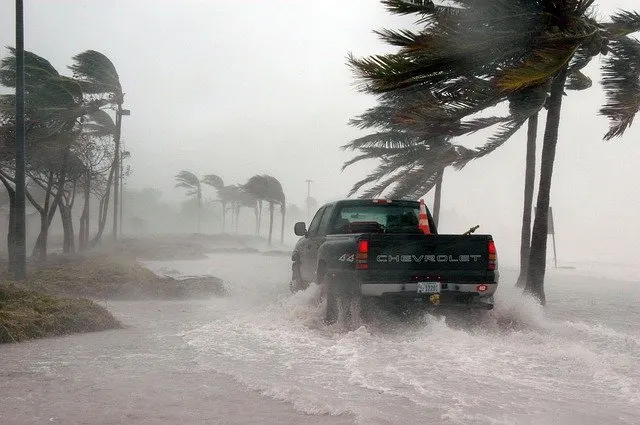
For sure, you have heard of a hurricane, but what about rebuilding your boat after it has been destroyed by one? It might sound like a reasonably easy task to do so.
In reality, though, it could be more complex. Not to mention that many people need to be aware of the steps they need to take to rebuild their boats successfully.
When rebuilding your boat after it experiences damage, there are many things to consider.
Assess the Damage
In the aftermath of a hurricane, you may find a lot of damage to your boat. Of course, you must assess the damage and ensure it is manageable.
First, look over the entire boat and ensure everything is still there. You can use a flashlight to check underneath furniture and other hard-to-see places—even though you might not see anything, if there’s something out of place, it could mean your boat has sustained some damage.
Next, check all of the equipment on board. Check all the ropes, lines, and pulleys for wear or other signs of damage—if they’re damaged in any way, you’ll need them fixed as soon as possible so your boat can continue sailing.
Finally, check the sails for any tears or other damage that might have occurred during the storm. If tears are in any sails, fix them immediately so they can be used again without further damage during future storms.
Look for Signs of Rot in Wooden Parts and Replace Them if Necessary
If you’re rebuilding a boat after a hurricane, you might notice signs of rot in the wooden parts of your boat.
It is not a good thing—rotting wood can weaken your boat, which means it may not hold up well under heavy use or even just regular wear and tear. So if you see any rot on your boat’s wooden parts, replace them.
You can find replacement parts at most marine supply stores. Make sure they are made from the same type of wood as your old ones, and you can visit Boat Outfitters Marine Lumber and find the wood that is compatible with your boat’s original design and construction for a perfect fit.
Treat Your Boat Against Mold and Mildew
After a hurricane, it’s essential to treat your boat against mold and mildew. Mildew is caused by moisture and humidity, so the best way to get rid of it is to dry the boat as soon as possible. You can use a blower if you want to speed up the process.
After drying out your boat, you’ll want to apply high-quality marine paint specially formulated for boats. Most paints are available at auto parts stores, but if you don’t have one nearby, take your boat to an auto body shop.
The professionals will know exactly which kind of paint is best for your boat and can even help you choose between several different brands that work well with certain boats (for example, fiberglass vs. vinyl).
Clean Up Anything Exposed to Salt Water, Including Deck Hardware and Wiring
If your boat were exposed to salt water during a hurricane, you’d want to clean it immediately.
After a hurricane, the salt water can do some severe damage to your boat. While you may not be able to see it in the water, there are still ways for salt water to get into your boat.
It can lead to corrosion of electrical components and damage to wooden structures—even if you don’t see any signs of damage.
The best way to prevent this from happening is by cleaning up anything that has been exposed to the salty water. You should also ensure that all electrical components and wiring are moisture-free before reconnecting them to their respective locations on your boat.
Look for Signs of Hull Integrity Loss
If a hurricane damages your boat, there are several things you can do to help it repair. Look for signs of hull integrity loss, and you may be able to save the boat.
You should inspect the hull for damage, including scraping and holes in the deck. If there is damage, there will be some repair on a structural component—such as cracks or buckling. It can lead to leaks, which can lead to more severe damage.
If you see any sign of hull integrity loss, you should contact a professional specializing in boat repairs. They will be able to assess the situation and recommend a course of action, including what materials will be necessary for repairs.
Reinstall Major and Minor Components
If you’ve been through a hurricane or other storm like this, the last thing you want is to have to rebuild your boat. But getting started now will give your boat a chance to recover from the damage and be ready for next season’s adventures.
First, ensure that any significant components of your boat damaged in the storm are either repaired or replaced.
These should include the engine, propeller shafts, blades, rudder shafts, blades, transom plate and bulkheads, hull sides and frames, hull bottom structure including keel bolts, deck fittings such as fenders and cleats, and so on.
If these are damaged beyond repair or replacement due to water intrusion or damage by debris during the storm, then they should be removed from the boat until they can be repaired or replaced by a qualified technician.
Final Thoughts
Most boat owners would say that the boating lifestyle begins and ends with a love of being on the water.
Yet, facing a significant repair job after a catastrophic event like a hurricane takes more than just passion for getting your boat back in shape and back to normal. It also takes determination, preparation, and patience.
- Sagittarius Man & Gemini Woman Love and Sex Compatibility - January 31, 2024
- Taurus Ascendant Rising Personality Traits in Men (Guide) - January 31, 2024
- How to Seduce and Attract a Sagittarius Man (Seduction Tips) - January 31, 2024
